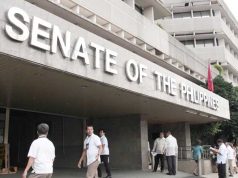Peso to weaken further next year on trade gap

By Karl Angelo N. Vidal, Reporter
THE PESO will likely weaken further against the dollar in 2019 as the country’s trade deficit is seen to widen brought by the Duterte administration’s infrastructure push, an economist from Bank of the Philippine Islands (BPI) said.
In an interview, BPI lead economist Emilio S. Neri, Jr. said the local currency is expected to trade within a weaker range next year.
“For next year, because the trade deficit will continue to be wide, we continue to expect a higher trading range,” Mr. Neri told BusinessWorld last week.
“On the average, we see P54.50, but the range can be from P52 to as high as P55.50, maybe P56.”
He attributed this to expectations of a widening trade deficit — or the gap between the country’s imports and exports — bolstered by the Build, Build, Build infrastructure program.
“We are spending on a lot of fixed capital. We’re catching up with our neighbors, and that is expected to continue.”
According to latest data, the country’s trade deficit stood at $3.55 billion in July, 171% wider than the $1.31 billion booked in the same period last year.
In that month, the Philippine import print climbed 32%, outpacing the 0.3% export growth.
“We haven’t seen the best of Build, Build, Build. Just imagine if we start importing the trains [and other materials to build] railroads and airports,” he said.
The government is embarking on an P8-trillion infrastructure spending program until 2022 in an effort to boost economic growth to 7-8% until then.
BPI’s lead economist also noted that remittances from overseas Filipinos will be insufficient to cap the trade gap.
“Next year, that will continue. [The trade gap will be] huge that your remittances are not enough to fund it. So the pressure is for the peso to continue to soften against the US dollar,” Mr. Neri said. “More so if the US continues increasing rates.”
The US Federal Reserve is expected to raise its interest rates during its two-day meeting ending Thursday. Another round of tightening as well as another two next year are also being looked at due to a tightening job market and with inflation rising above the 2% target.
For the yearend, Mr. Neri projects the peso to close at around P53 versus the dollar on the back of seasonal remittance and portfolio flows.
“Yearend forecast is actually closer to P53 because remittances would come in an then we are hoping that some of the portfolio flows will be in favor of the Philippines so that even if the current account is in deficit, we have some [balance of payment] inflows to offset it.”
The peso breached the P54-per-dollar level on Sept. 12 and is lingering at its weakest level in nearly 13 years.
The local unit is currently averaging P52.437 year-to-date.



